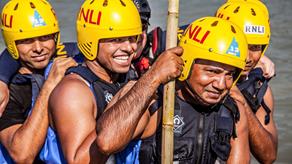
As world sea levels rise and extreme weather becomes more common, countries and communities need to become more resilient to floods.
learn more

With the causes of drowning varying widely, there is no single solution.
We’ve been working with our partners to find solutions that work for them - solutions that fit the skills and materials available in low-resource communities. We now have six tried-and-tested interventions that can either protect people from the risk of drowning, or rescue them safely from the water.






